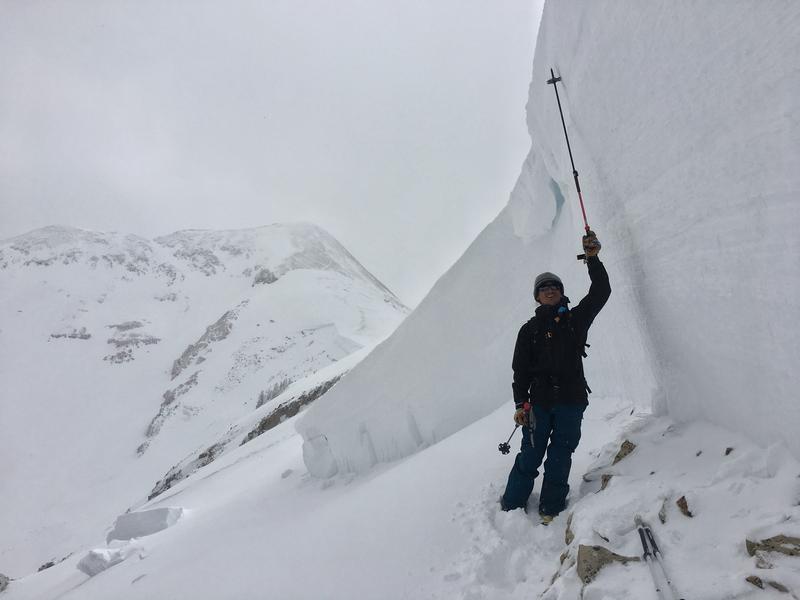UAC director Mark Staples will be issuing forecasts for the La Sal and Abajo Mountains while Eric takes a vacation to warmer climates and does a short stint in the SLC office.
We visited the weather station on Pre-Laurel Peak yesterday with Ed Grote. He helped us install new communication equipment. Hopefully that starts working and we'll have wind data from that location.
Yesterday started with temperatures in the single digits F but warmed into the 20's F and was a beautiful, cold winter day. Winds weren't moving much snow, but were blowing just enough at ridges to make it too cold to stand around very long. This morning temperatures at the Geyser Pass Trailhead are 26 deg F and at Gold Basin Study Plot 20 deg F. Looking at other weather stations further away and at weather models, my best guess for ridgetop winds at 11k is that they are blowing 10-15 mph from the SW with gusts of 30 mph.
Today temperatures should stay in the upper 20s F but may feel a bit warmer depending on how much sun appears. Winds should stay about what they are. As soon as you get off a ridgeline, you shouldn't feel much wind. The weather forecast calls for snow tonight and tomorrow. It looks like the best chance for more accumulating snow will be Monday evening. More snow should come through the week, but we'll see.
Recent snow has been very dense. Combined with cold temperatures, riding conditions are excellent. The snow surface is cold, dry, powdery, supportable, and fast for skiing on low angle slopes. There were a few snowflakes falling yesterday but the most recent snowfall was Friday afternoon and evening when 6 inches fell. Since last weekend, a total of 28 inches has fallen which contains 3 inches of water.
Yesterday we found a massive natural avalanche on Pre-Laurel Peak that ran into Horse Creek. It was 6-12 feet deep and over 2500 feet wide and broke about 6 inches above the ground. See more pictures
HERE. This slope had been loaded by strong SW winds on Thursday & Friday when it likely occurred. The 3 inches of water weight in the last seven days meant that this slope had been loaded by a total of 6 inches of water weight.











